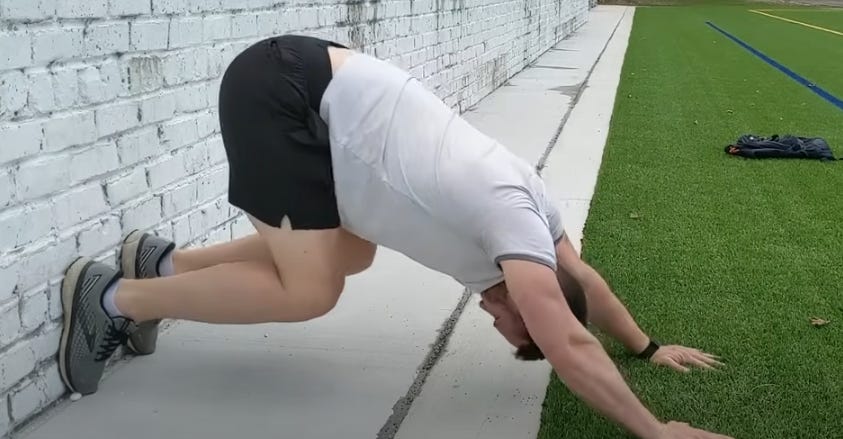I recently came across a version of the pushup popularized by boxer Mike Tyson in his heyday. I didn’t even know the man had a push-up named after him, but here we are. After studying it, I didn’t try to make it a fitness challenge — I just wanted to see how many reps I could achieve and why this move was “a thing.”
Legend has it Tyson smashed out 500 reps a day during his training sessions, alongside other exercises. I wasn’t about to follow suit, but I love learning new exercise versions — and this one looked intriguing.
I can state confidently that this is a fairly challenging exercise that enhances strength, power and mobility. It engages nearly every muscle group from your chest and shoulders to your legs and core. Even if you’re a beginner or have little shoulder strength, there are variations of the exercise that help you receive its benefits. And if you’ve been suffering from shoulder mobility issues or pain, then this pushup version is actually helpful through its wide range of motion, promoting improved flexibility and strength. Essentially, it feels really good to perform it.
Surprisingly, I already used to do a different version of it called a “Rocking Pushup.” It looks something like this:
Basically, it involves rocking your body into and out of a pushup position, and at the end of the motion, sitting towards your heels without the knees touching the ground. It’s an exercise that engages muscles you wouldn’t typically use in a standard pushup. This includes your quads, abs, lats, hip flexors, lower traps, and even your glutes and hamstrings to a lesser extent. The altered motion of this exercise, compared to a standard pushup, significantly increases the workload on the chest (pecs), front shoulders (anterior delts), and triceps.
The Tyson Variation
So what is different about the Mike Tyson version from what I used to do? Well with his version, the feet are placed against a wall, changing the movement pattern in some critical ways. The body stays in a more neutral position and with the push off the wall, it’s a biomechanically similar position to standing.
To perform this version, start in a standard push-up position with your feet against a wall for support, elbows at 45 degrees or less and hands at level of solar plexus. Only your hands and feet are touching the ground.
Now drive up and when your arms are about 60% extended, push back to sit back into a deep squat, with the hips and knees folding and the arms becoming outstretched overhead, while keeping your chest close to the ground.
Then driving forward through your heels (in a controlled manner), shift your body weight forward, controlling the movement with your shoulders. Stop when you get to the conventional push-up position again. Lower your chest while keeping your elbows tucked, core engaged and your back flat. Now you’re back to your starting position. Repeat as many times as desired.
Pro Points:
Keep feet flat on wall
Don’t allow the pelvis to drop down
Don’t allow the butt to come up too high
Watch inadequate core engagement, as this puts stress on the spine. Maintain a straight line from your head to your hips.
Knees should be about 2 inches off the ground throughout the entire movement sequence.
Don’t rush it or you will lose form and balance and possibly hurt your shoulders. Maintaining control (especially once fatigue kicks in) is vital.
Difficulty Levels
If you're new to fitness or have any injuries, it's crucial to begin with easier variations and gradually progress to the full movement:
Variation # 1 - Begin the exercise with knees on the ground (instead of slightly elevated) and rocking forward from there.
Variation # 2 - You can also perform the exercise on an incline (table top), shifting a lot of your weight to the legs
Conversely, to increase the difficulty level, you can:
Increase reps
Use a weighted vest
Perform it as s a deficit pushup, by elevating hands and feet with boxes or blocks
I found this pushup version to be way more fun than standard push-ups, and my heart rate picked up considerably. If your routine is getting stale or you just want to challenge yourself with something new, it will definitely help keep you challenged. With regular practice, you'll continue to improve and push yourself to new heights.
Your presence here is greatly valued. If you've found the content interesting and useful, please consider supporting it through a paid subscription. While all our resources are freely available, your subscription plays a vital role. It helps in covering some of the operational costs and supports the continuation of this independent, unbiased research and journalism work. Please make full use of our free library.









